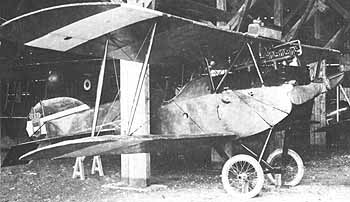|


In
early 1917, the Brandenburg D.I had reached the limit of its
development. The need for a better design prompted Phönix
Flugzeug-Werke to build a fighter which might benefit from the heavier,
more powerful engines that were becoming available. This led to the
introduction of the Phönix D.I, D.II, D.IIa, and D.III biplane
fighters. A small, stocky biplane with a single bay, the D.I climbed
poorly and was slower and less manoeuvrable than its opponents, but it
offered good visibility and was well armed. When the structural
weakness evidenced in early production models was overcome, the Phönix
fighters proved to be sturdy, dependable aircraft and Austro-Hungarian
pilots soon found they could dive as fast as they wanted without fear
of tearing the wings off the plane.
Country: Germany
Manufacturer: Phönix Flugzeug-Werke
Type: Fighter
Introduced: 1917
Number Built: 50
Engine(s): Hiero, liquid cooled, 6 cylinder inline, 200 hp
Wing Span: 32 ft [9.5 m]
Length: 21 ft 7½ [6.62 m]
Height: 9 ft 2 in [2.79 m]
Empty Weight: 1,411 lb
Gross Weight: 1,775 lb [805 kg]
Max Speed: 112.5 mph [180 km/h]
Ceiling: 19,685 ft [6,000 m]
Endurance: 2 hours
Crew: 1
Armament: 2 machine guns, 8 mm Schwarzlose |
